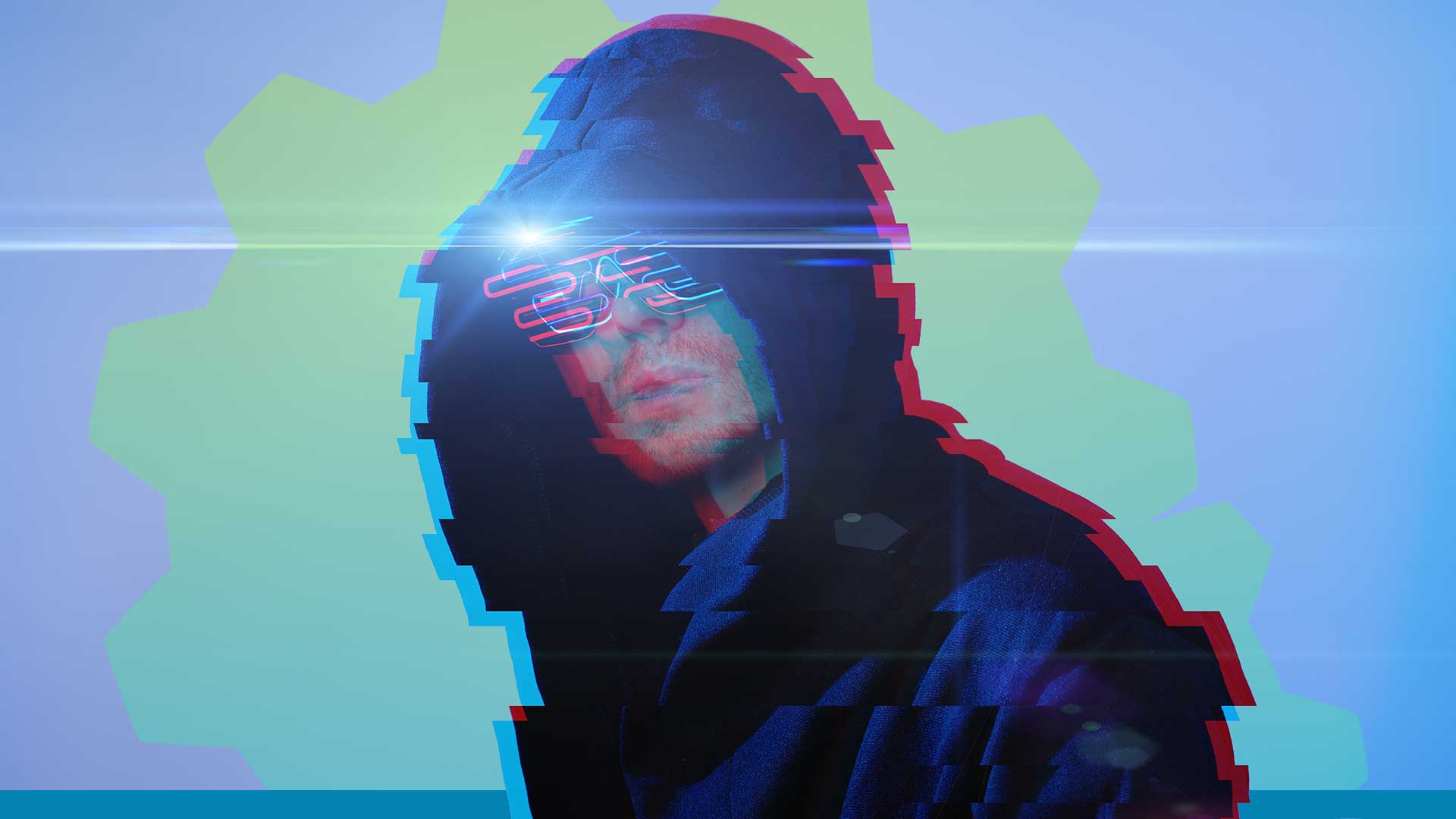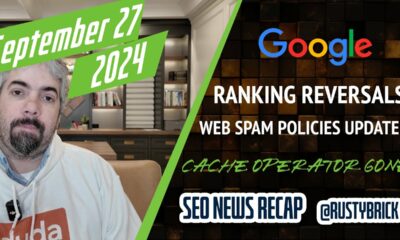MARKETING
What Marketers Need to Know About Web 3.0

Whether you realize it or not, you’re familiar with Web 2.0 already.
You navigated to our website, clicked on this article, and you’re now reading it. Consider yourself a Web 2.0 aficionado.
Web 2.0 is the web you’ve grown to know over the past 15-ish years. It’s the web that marketers have learned to use to help customers in need, social media exists…and the reason data privacy is a regular conversation in Congress these days.
Web 3.0 is the next version of the web.
It seems overwhelming because it involves a lot of new worlds that you’re not familiar with, like cryptocurrency and blockchains. But, you don’t need to understand every detail of crypto or blockchains to know what Web 3.0 is.
You don’t understand exactly how the current web (Web 2.0) works, do you? Nope. Yet you’re navigating it with ease, marketing, buying products, and connecting with your network daily.
Let’s go over what you need to know about Web 3.0 to understand where you fit into it with your digital marketing expertise.
What is Web 3.0?
Web 3.0 is an updated version of the current web. Just like you create a beta product, turn it into an official product, and optimize and improve that product as time goes on—the web follows the same process.

We’ve used 3 versions of the web, Web 1.0, Web 2.0 (your current web experience), and Web 3.0.
Web 1.0 (1991-2004)
Web 1.0 was a simple time. There was no such thing as a login button, commenting, or sharing. Every page was static, which means it was the digital version of a newspaper. You could read it all you wanted, but there wasn’t anything else to do on that page.
For almost a decade, you didn’t have anything to distract you from the content you were reading. This will go down in history as the “quietest” time on the internet. People using the Internet weren’t looked at as consumers of ad campaigns the way they are now.
They were simply consumers of the information on the websites they visited. And those websites were complicated, hard to navigate, and slightly overwhelming to our Web 2.0 adjusted eyes. Here’s what CNN’s website looked like in 2000:

Then Google ads launched (that same year). This would mark the Internet’s shift from people using the Internet as an informational product to becoming the product themselves.
Web 2.0 (2004-Present)
Web 2.0 is almost old enough to drink in the U.S., where the legal age is 21. It’s been with us for some time now and has become the web experience we’re used to. We’ve forgotten about the Web 1.0 days, including the plethora of blue hyperlinks and lack of ads and data collection.
In Web 1.0, people used the web to get information from its pages. Today, the web uses its pages to get information from people.
- What product are you shopping for, and how likely are you to buy in the next few days?
- Did you forget something in your cart?
- Here’s a discount code to help you finally click the buy button.
This data collection has become the backbone of digital marketing. We use Google and social media ad platforms to target our ideal customers—down to the detail. Before data regulations and privacy concerns started catching momentum, marketers had a seemingly endless stream of information about their customers thanks to these ad platforms.
This is the defining factor of Web 2.0: Companies collect user data and sell it to advertisers.
And it’s led to a lack of privacy for users. Even as laws are enacted to attempt to salvage consumer data, navigating which cookies you want enabled, GDPR, and how to stop the spam emails bombarding your inbox isn’t entirely clear.
We don’t even know what web experience other people are having. Every newsfeed is personalized to that user’s interests, showing differing content even if we follow the exact same people.
As Web 2.0 has matured, so have web users. More people realize they don’t want to be the product, especially if they’re not getting paid for their contribution to mega-companies profits.
And that’s led to the rise of Web 3.0, a web where we’re the owners of our content.
Web 3.0 (Present)
Web 3.0 is considered the next evolution of the Internet. It’s built on blockchain technology because the major sticking point of Web 3.0 is that it’s decentralized.
Blockchain technology is a well-kept record of public transactions. This differs from the transactions you’re used to (that aren’t on the blockchain). These transactions are maintained across several computers in a network and are accessible by anybody interested. People like blockchain technology because it’s less susceptible to hacking and public transactions create transparency that hasn’t been available before.
They also love it because it’s decentralized. Instead of having one company or person in charge (centralized), blockchains create a decentralized web experience. For example, Mark Zuckerberg has control over what Facebook does (and, of course, has lots of help and insight from his team). As users of Facebook, we didn’t get to vote on the company’s recent name change to Meta because we don’t own the company.
We’re users of Facebook and we ride the wave wherever the platform chooses to go…and take our content.
In Web 3.0, the idea is to give the web back to the user. There are two main ways this is done:
- Instead of having a centralized leader, Web 3.0 is run by decentralized autonomous organizations, DAOs, where the people with the most tokens in that organization get to vote on how the company changes. Without a controlling authority, it can’t be shut down, and content essentially can’t be censored (which is also an argument against Web 3.0).
- Our digital identities don’t become tied to our real identities, which is how Web 2.0 is set up. When you look at a product on a Shopify ecommerce store, that product pops up in your Facebook newsfeed and YouTube ads. In Web 3.0, you can view pages, products, and make purchases without it becoming a part of your feeds and online experience.
Just like Web 2.0 started once Google Ads got momentum, Web 3.0 got its momentum as blockchains and cryptocurrency become popular with more people. And as marketers, we have a golden rule: advertise where the attention is.
How to Market in Web 3.0

We have some relieving news: marketing in Web 3.0 is the same as marketing in Web 2.0. The marketing foundations can’t change because the platform changed. You use the same copy strategies in newspapers as you use on Facebook ads. The only difference is the platform (and some updated imagery).
Take a look at this 1978 gin ad with the cheeky copy, “You’ll enjoy this Christmas tree even more after you take it down.”

It’s not much different than Bombay Sapphire’s Instagram post with the caption, “Guaranteed not to be re-gifted.” The only two differences are the updated, clearer photograph and the platform (in-person versus Instagram).

See how the same rules of marketing applied BEFORE Web 1.0 and in Web 2.0? Marketing in Web 3.0 will follow the same marketing foundations, with one additional step.
Step #1: Who’s Your Customer Avatar
The first step in marketing any product on every version of the web is knowing who your customer avatar is. Without this step, you can’t write copy, create the right messaging that sells your product, or know WHO to market it to.
The Customer Avatar Worksheet shows you who your customer is, on a deeper level than where they live and how old they are. Using the Customer Avatar Worksheet, you’ll figure out:
- What your customer avatar’s goals are related to (and not related to) your products: Do they want to spend more time with their family, and your productivity platform helps them get back 1 hour per day?)
- The values your customer avatar has for their career and life: Do they value the environment and reducing their fossil fuel emissions and your e-bike helps them stay aligned with that value?
- The challenges they have creating friction and pain: Is finding a dropshipping company to sell their merch through costing them hundreds of dollars in samples and your product connects them with vetted merchandise dropshipping factories?

You’ll also figure out what books and blogs they’re reading, who they look up to in their industry, and where they spend their offline time networking with like-minded people. This makes your content (and brand) relate to them in a way that a company that hasn’t done this work can’t possibly.
Step #2: What After State Does Your Product Create For Them?
The After State your product creates for your customer avatar is their end goal. It’s the light at the end of the tunnel they’ve been yearning for, and your product gets them. We break this up into the Before State (what are they experiencing now?) and the After State (what do they want to experience from relieving their pain points and challenges?).
The Before and After Grid asks 5 questions per “state”:
- What does your customer avatar HAVE in the “Before” state? What does your customer avatar HAVE in the “After” state?
- How does your customer avatar FEEL in the “Before” state? How does your customer avatar FEEL in the “After” state?
- What is an AVERAGE DAY like for your customer avatar in the “Before” state? What is an AVERAGE DAY like for your customer avatar in the “After” state?
- What is your customer avatar’s STATUS in the “Before” state? What is your customer avatar’s STATUS in the “After” state?
- What is an EVIL plaguing your customer avatar in the “Before” state? How does your customer avatar conquer it and bring more GOOD to the world in the “After” state?

Between your Customer Avatar Worksheet and your Before and After Grid—you have the exact messaging you need to market your products and services to your customer avatars. Your copy is practically written for you already, and now it’s all about overcoming their hesitations and making sure they’re 100% clear about the product/service.
Step #3: What Do They Need to Know About the Product in Web 3.0?
If you’re not marketing on Web 3, you’re still answering a similar question. If you’re selling a coaching program, your prospects need to know what to expect inside the program. The same applies to Web 3.0. Your customers need to know what to expect from the product, and in terms of Web 3.0—what benefits they get from choosing this web experience.
This is why filling out the Customer Avatar Worksheet and Before and After Grid is so important. If your customer avatar is tired of Facebook selling their data and stalking their every move across the Internet, you have your selling point as to why this customer wants to buy your product/service and experience it on Web 3.0 versus Web 2.0
Before State: Has anger towards their newsfeed showing them products they searched on another platform and feels like their every move is tracked by massive corporations.
After State: Has the freedom to navigate the web without centralized corporations collecting and selling their information and feels free in their Internet experience.
Or, if your customer avatar wants to move off of platforms that have centralized authority (like Google, Facebook, TikTok, Twitter, etc.) and towards platforms that are decentralized and give their users ownership over their content—that’s the messaging in your marketing.
Before State: Has a negative bias towards centralized authority on platforms deleting content for violating terms and conditions without being clear about why and feels like their platform isn’t a reliable place to grow an audience anymore.
After State: Has removed the worry of a platform accidentally deleting their content or profile despite not posting content that violates terms and feels safe growing their audience on a platform they can take with them throughout Web 3.0.
Welcome to Web 3.0

Web 3.0 isn’t as overwhelming as it may have seemed. If you’re ever feeling like it’s going above your head—remember that you don’t need to understand every detail of cryptocurrencies, blockchains, and decentralization to use these platforms. You need to know the idea, not every detail of the complex systems that manifest them into reality.
You’ve used the same mindset in Web 2.0. You don’t need to know how the Internet cables connected around the world are transmitting the world wide web from New York City to Tokyo. You just need to know the basics to understand what the web is and how to use it.
As Web 3.0 becomes a bigger part of the Internet experience, marketers need one reminder: marketing on Web 3.0 follows the same rules of marketing in newspapers to billboards to websites:
- Know your customer avatar.
- Figure out the After State to write compelling messaging.
- Remove their hesitations by explaining exactly what the product is (ex. what Web 3.0 benefits they’re getting from it).
Isn’t it nice to have a skill set that transfers through the different variations of the web?


















You must be logged in to post a comment Login